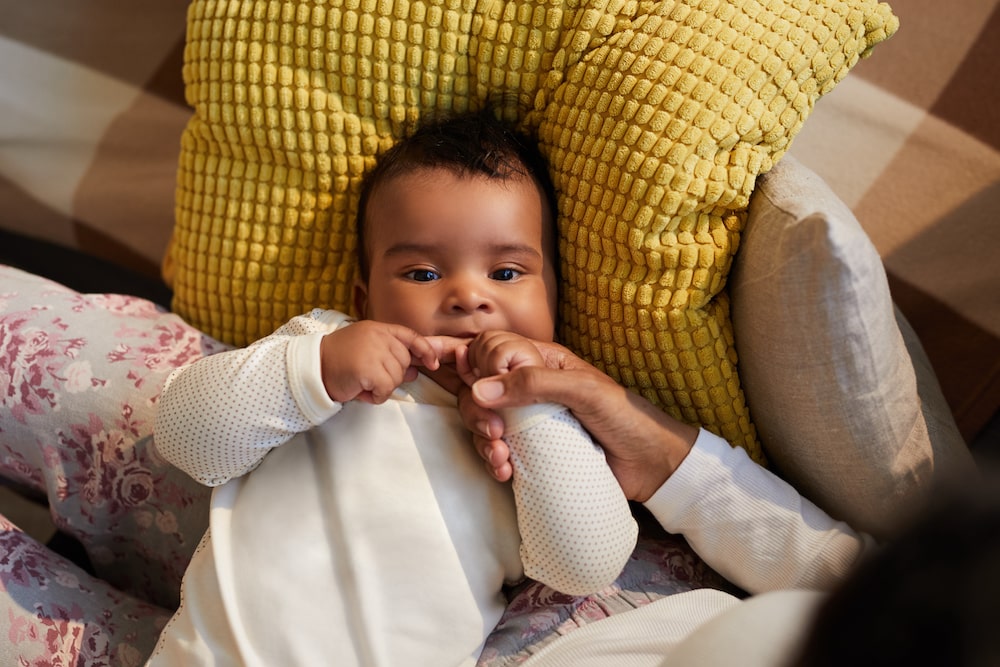Many parents are excited to see their baby’s first teeth appear, even as they are sad to say farewell to their gummy smile. It can be a difficult time for both baby and their parents as the little one experiences obvious discomfort. Knowing how to make teething more comfortable for your baby can provide relief for everyone involved.
What is Teething?
Teething refers to the eruption of baby’s teeth through their gums. The age at which teething begins can vary widely; some babies may start teething before they are 4 months old and may even be born with their first teeth. Others may start teething after 12 months. On average, however, babies will begin teething around 6 months of age.
It is not difficult to know when your baby begins teething. They may be sleepless at night and irritable during the day. They may also experience swelling of the gums, drooling, and a mild temperature. You will also likely find them rubbing their gums or even their ears.
When does teething start?
Teething usually begins around 6 months of age. But it is normal for teething to start at any time between 3 months and 12 months of age. By the time your child is about 3 years old, he or she will have all 20 primary teeth. During the teething period there are symptoms that include disrupted sleep, swelling or inflammation of the gums, drooling, loss of appetite, irritability, rash around the mouth, mild temperature, diarrhea, increased biting and gum-rubbing and even ear-rubbing. These symptoms were reported by 70-80 percent of parents according to an article from the British Dental Journal.

Help Your Teething Baby Be More Comfortable
No one likes to see their child in discomfort. Here are some tips to help you comfort your teething baby:
Keep Things Cool
Your child may find something cool on their gums to be soothing. One popular option is a cool metal spoon. Take a clean regular teaspoon from your kitchen drawer and place it in your fridge. Do not freeze it! Once it is cool, you may gently rub your baby’s tender gums with the back of the spoon.
Another option is to submerge a clean washcloth in water and wring it out until it is just damp. Place it in the fridge until it is cool. Fold it and allow baby to chew on it. Be sure to always monitor them and never leave them unattended while they are chewing or sucking on the washcloth, as it could pose a choking hazard.
Gum Massage
Your baby will likely start doing this on their own, but you can help by using a clean finger or wet gauze to rub their gums. The pressure of the massage can help to soothe them and ease their discomfort.
Provide a Non-Gel Teething Toy
Your baby will instinctively want to chew on something. You can provide them with a commercially available teething toy. Chill it in the fridge to provide extra relief. Make sure it is a suitable size and easy for them to hold.
Wipe Away Drool
Aside from easing the pain caused directly by teething, you should wipe away their drool to keep their face clean and dry. This can help prevent a rash from forming. Just be sure not to wipe excessively, as that can cause irritation of its own.
Talk to Your Dentist About Medication
If your baby continues to have discomfort despite your best efforts, you may want to talk to your pediatric dentist or about medication that can offer relief.

Lots of Cuddles
Sometimes, cuddles can help soothe your little one. A little extra loving from mom or dad can never hurt.
In most cases, teething will be manageable at home. If, however, your baby seems to be experiencing greater discomfort than normal, or if their teething is interfering with their eating and drinking, or if you notice a fever or rash, consult with your local family dentist to make sure there is no other issue at play.



0 comments on “How to Make Teething More Comfortable for Your Baby”